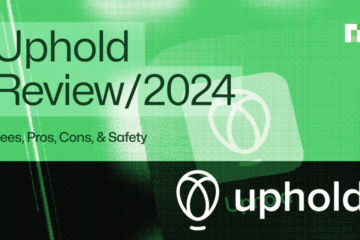Intellectual property (IP) lies at the heart of the creative economy, but its management in today’s digital environment is inherently tangled in legal complexities and trust issues. Story Protocol was created to address these challenges by providing a blockchain system for registering, licensing, and monetizing creative works.
This guide explains what Story Protocol is, the problems it attempts to solve, and how its foundational components set it apart as an innovative approach to IP management. By leveraging blockchain technology and standards like ERC-6551, it aims to make IP assets “programmable,” allowing developers to set terms, define licensing rules, and transparently handle derivative creations.
What is Story Protocol?
Source: story.foundation
Story Protocol is a decentralized platform designed to modernize how intellectual property management is handled across various industries. It embeds your creative or technical work into on-chain structures, making ownership and licensing transparent for everyone to see. The system takes advantage of blockchain’s security and composability, allowing you to combine different IP elements under a unified set of rules encoded in a smart contract.
One of its defining features is the use of ERC-6551, which treats tokens as account-like entities capable of tracking ownership or sub-assets. Through this working mechanism, Story Protocol aims to open up collaborative opportunities and revenue pathways that traditional IP frameworks fail to accommodate.
The Problem of the Intellectual Property Market
Despite the value placed on creative and intellectual works, the existing IP market is burdened by outdated processes. Creators often face obstacles such as tedious licensing, expensive legal counsel, and cumbersome dispute resolution.
Derivative works—like fan fiction, spin-off games, or remix culture—either proceed unofficially or require negotiations that are difficult to enforce globally. Meanwhile, a lack of transparent tracking can lead to underreported usage and royalty shortfalls, depriving original creators of revenue.
Story Protocol’s Vision
Story Protocol envisions a blockchain-based model where creators tokenize their IP, define monetization terms on-chain, and permit seamless collaborative development of spin-offs and expansions. By removing the manual gatekeepers it aims to facilitate faster, more transparent licensing agreements that automatically allocate royalties to the proper participants.
Source: story.foundation
Core Components of Story Protocol
By embedding logic and metadata into smart contracts, the protocol can automate key processes such as royalty splits, usage permissions, and future updates. This enables creators to control and streamline oversight of complex works, whether they stem from gaming universes, serialized fiction, or open-source software.
Programmable IP
“Programmable IP” indicates that licenses and monetization rules are embedded directly in blockchain logic. For example, the original creator of a story or character can code how derivative content is allowed to use those assets. This might include specifying royalty percentages, mandatory credit to original creators, or restrictions on mature themes.
Because such terms exist on-chain, once they are set, they become transparent and hard to tamper with. Applications or third-party projects referencing that IP must follow the programmed guidelines, offering a more reliable path to ensuring creators maintain control and receive their deserved share of revenue.
ERC-6551
ERC-6551 is a token standard that treats NFTs as if they have their own “account.” This means an NFT can hold or transact other tokens, bridging the gap between simple ownership and dynamic asset management. Within Story Protocol, ERC-6551 tokens can represent IP assets that not only grant ownership but also handle sub-assets or derivative tokens.
How Story Protocol Works
Story Protocol leverages on-chain data structures and smart contract logic to let IP creators define terms and track usage in near real-time. Each IP asset registers to a unique token or set of tokens, which carry relevant metadata like creation date, creator addresses, and usage clauses. This metadata remains accessible to other dApps or AI tools that want to incorporate the IP as long as they adhere to the embedded rules.
IP Registration and Ownership Verification
To register content, creators present proof of authorship or a timestamped record that confirms their rights. This might be done through a user-friendly dApp, which takes the final submitted info and deploys a token representing the IP asset. Ownership is placed on-chain, so any prospective user can verify who holds the rights.
Composability for Collaboration and Derivation
Story Protocol’s design embraces composability, allowing derivative works or expansions to build upon original tokens. A child IP asset might reference a parent, inheriting certain aspects and adding new features. Royalties or credit distributions occur automatically based on predefined percentages.
Licensing and Agreements Automation
Licensing deals, once labor-intensive, become automated lines of code. Smart contracts define the scope of permitted usage, whether it is a single-run print of a character in a comic or indefinite usage in a game.
Payment splits can go directly to the wallet addresses of original authors, co-authors, or contributors. This self-executing format also fosters trust, reducing concerns over late or missing royalty payouts.
Story Protocol’s Programmable IP License (PIL)
An integral part of Story Protocol is the PIL, a template or module that codifies essential usage rights and revenue structures on-chain.
This license can be linked to each IP token, outlining allowable adaptations, monetary splits for derivative creations, and conditions for brand consistency. Once deployed, third parties engaging with the token must abide by the license code, guaranteeing that all derivative works remain consistent with the stated rules.
Story Protocol Tokenomics
Story Protocol puts IP at the heart of a new asset era, especially with AI accelerating innovation. In an age where generative AI relies on training data, algorithms, and licensed works, IP is becoming an increasingly vital resource. Yet, complex legal frameworks and proprietary barriers often block fair revenue sharing or wide-scale collaboration. Story Protocol seeks to solve these issues by reshaping IP into “programmable assets,” supported by the $IP token on its Layer 1 blockchain.
Initial $IP Distribution
- 58.4%: Ecosystem & Community grants, Foundation resources, and Initial Incentives—This broad category encourages dev engagement, community events, marketing, and educational efforts that expand the IP network.
- 21.6%: Early Backers—investors and advisors who joined early. Their tokens vest over 48 months.
- 20%: Core Contributors—key builders rewarded through multi-year vesting, aligning team incentives with Story Protocol’s long-term vision.
Staking “Fair Launch”
The staking and launch mechanism to Story Protocol is as interesting as it is equitable. No single group earns staking rewards in advance. During the “Singularity Period,” lasting about 42 days from mainnet genesis, participants can stake or delegate $IP without receiving immediate rewards. After that window, known as the “Big Bang,” all stakers begin accruing rewards equally. This balanced approach aims to give every user, from major token holders to curious newcomers, an equal footing in shaping the network. By turning IP into a transparent and programmable asset, Story Protocol hopes to spark a new generation of open, AI-ready content.
Benefits of the Story Protocol
Enhanced monetization potential
The protocol’s automated royalty management enables creators to set dynamic revenue splits from derivative works or expansions. Instead of waiting for manual payouts, authors receive compensation in near real-time.
Creative collaboration opportunities
With on-chain composability, multiple projects can easily merge ideas, characters, or entire narrative universes. A derivative can connect back to parent tokens, preserving credit and automatically allocating royalties.
Simplified IP licensing and transparent ownership
Story Protocol records all licensing terms on a public ledger, so third parties can instantly see who owns a piece of IP and the cost or limits for using it. This transparency cuts down on disputes since the entire community can verify each registered claim.
Story Protocol Ecosystem
The Story Protocol ecosystem comprises creators, derivative authors, and specialized dApps that facilitate the discovery or integration of on-chain IP assets.
Project owners might set up a user-friendly front end where fans can browse curated libraries of characters, environments, or story plots. Developers can embed Story Protocol data into AI models or gaming engines, powering real-time expansions of game lore or interactive experiences.
Meanwhile, token holders may help guide governance, voting on updates to licensing modules or dispute resolution approaches. These collective efforts foster a vibrant IP marketplace that broadens the scope of creative collaboration.
Challenges and Future of Story Protocol
| Challenge | Potential Solutions / Outlook |
| Unclear Legal Framework | Encourage alignment with established IP laws, bridging real-world contracts. |
| Limited Adoption and Education | Provide straightforward tools for creators, plus incentives for new projects. |
| Complex User Experience for On-Chain Licensing | Offer user-friendly dApps that abstract away the blockchain’s complexity. |
| Scalability for Large-Scale Projects | Explore L2 solutions or sidechains to handle high transaction volumes. |
| Overreliance on Proper Governance | Implement transparent voting systems, engage communities, and refine rules. |
Conclusion
Story Protocol reimagines how intellectual property can be shared, licensed, and expanded, all while ensuring transparent credit and fair compensation. Through ERC-6551 tokens, programmable IP licenses, and on-chain ownership records, creators can manage their work’s evolution with fewer barriers.
If broader adoption follows, we could see a diverse ecosystem of interactive narratives and cross-project collaborations. Story Protocol stands as a promising demonstration of how a blockchain platform might unify innovation and revenue-sharing in the creative space.
FAQs
What is the Story Protocol architecture?
It is a framework that utilizes blockchain smart contracts, ERC-6551 tokens, and composable licensing modules. This setup allows quick registration and flexible monetization of IP assets.
How does Story Protocol help with IP registration?
Creators upload proof of their work on-chain, turning their IP into a token that encodes proof of creativity and ownership details. The chain then publicly verifies each claim, ensuring transparent, tamper-resistant records.
How to invest in Story Protocol?
Once a Story Protocol token or governance token exists on major exchanges, potential supporters can purchase it. Follow official announcements for details on presales, listings, or staking opportunities.
Can Story Protocol be used in gaming?
Absolutely! Developers can tokenize in-game assets or entire narratives, enabling collaborative spin-offs and real-time usage tracking. Automated royalties facilitate a more open and evolving game universe.
 Bitcoin
Bitcoin  Ethereum
Ethereum  Tether
Tether  XRP
XRP  USDC
USDC  TRON
TRON  Lido Staked Ether
Lido Staked Ether  Dogecoin
Dogecoin  Figure Heloc
Figure Heloc  Cardano
Cardano  WhiteBIT Coin
WhiteBIT Coin  Wrapped stETH
Wrapped stETH  Bitcoin Cash
Bitcoin Cash  Wrapped Bitcoin
Wrapped Bitcoin  USDS
USDS  Binance Bridged USDT (BNB Smart Chain)
Binance Bridged USDT (BNB Smart Chain)  Chainlink
Chainlink  Wrapped eETH
Wrapped eETH  Monero
Monero  WETH
WETH  Hyperliquid
Hyperliquid  Stellar
Stellar  LEO Token
LEO Token  Zcash
Zcash  Coinbase Wrapped BTC
Coinbase Wrapped BTC  Ethena USDe
Ethena USDe  Litecoin
Litecoin  Sui
Sui  Avalanche
Avalanche  Hedera
Hedera  sUSDS
sUSDS  Shiba Inu
Shiba Inu  Dai
Dai  USDT0
USDT0  Mantle
Mantle  PayPal USD
PayPal USD  Toncoin
Toncoin  World Liberty Financial
World Liberty Financial  Cronos
Cronos  Ethena Staked USDe
Ethena Staked USDe  Uniswap
Uniswap  Polkadot
Polkadot  MemeCore
MemeCore  Aave
Aave  USD1
USD1  Canton
Canton  Rain
Rain  Bitget Token
Bitget Token 


